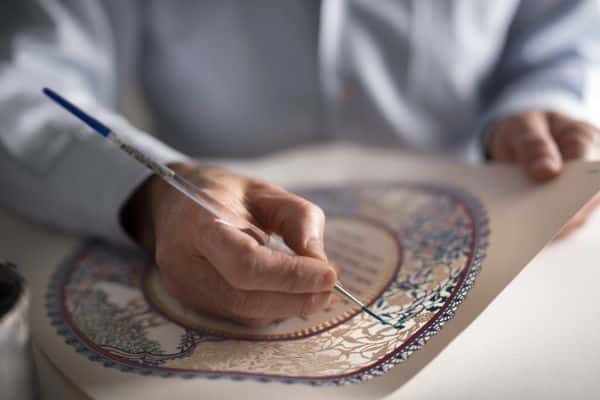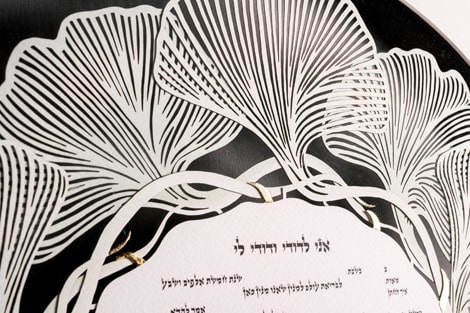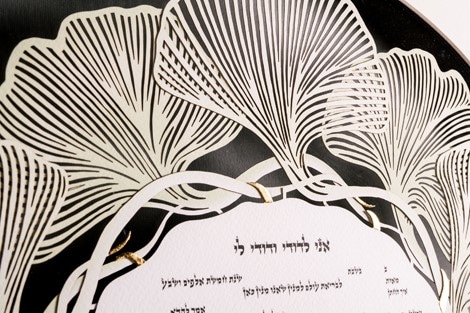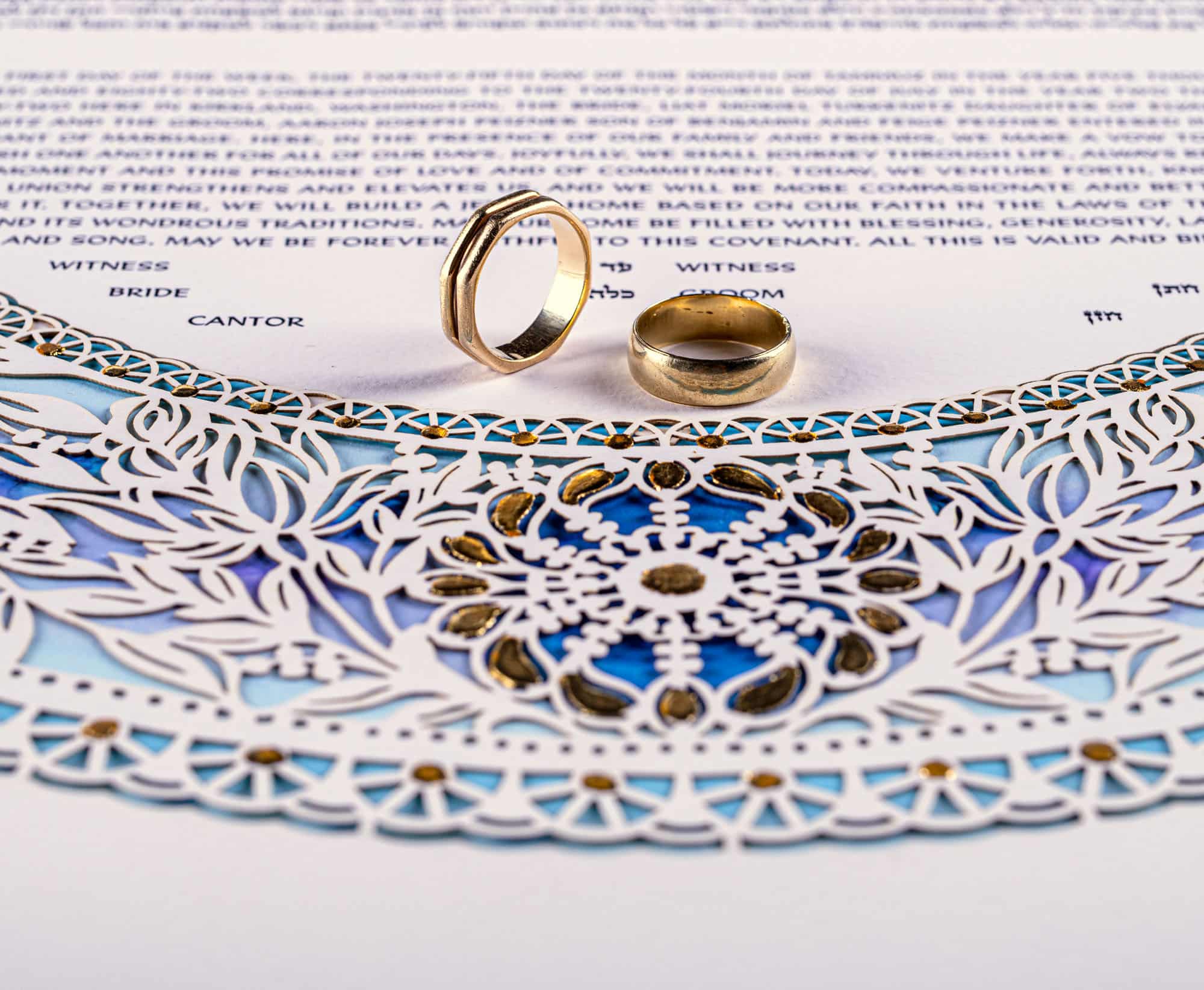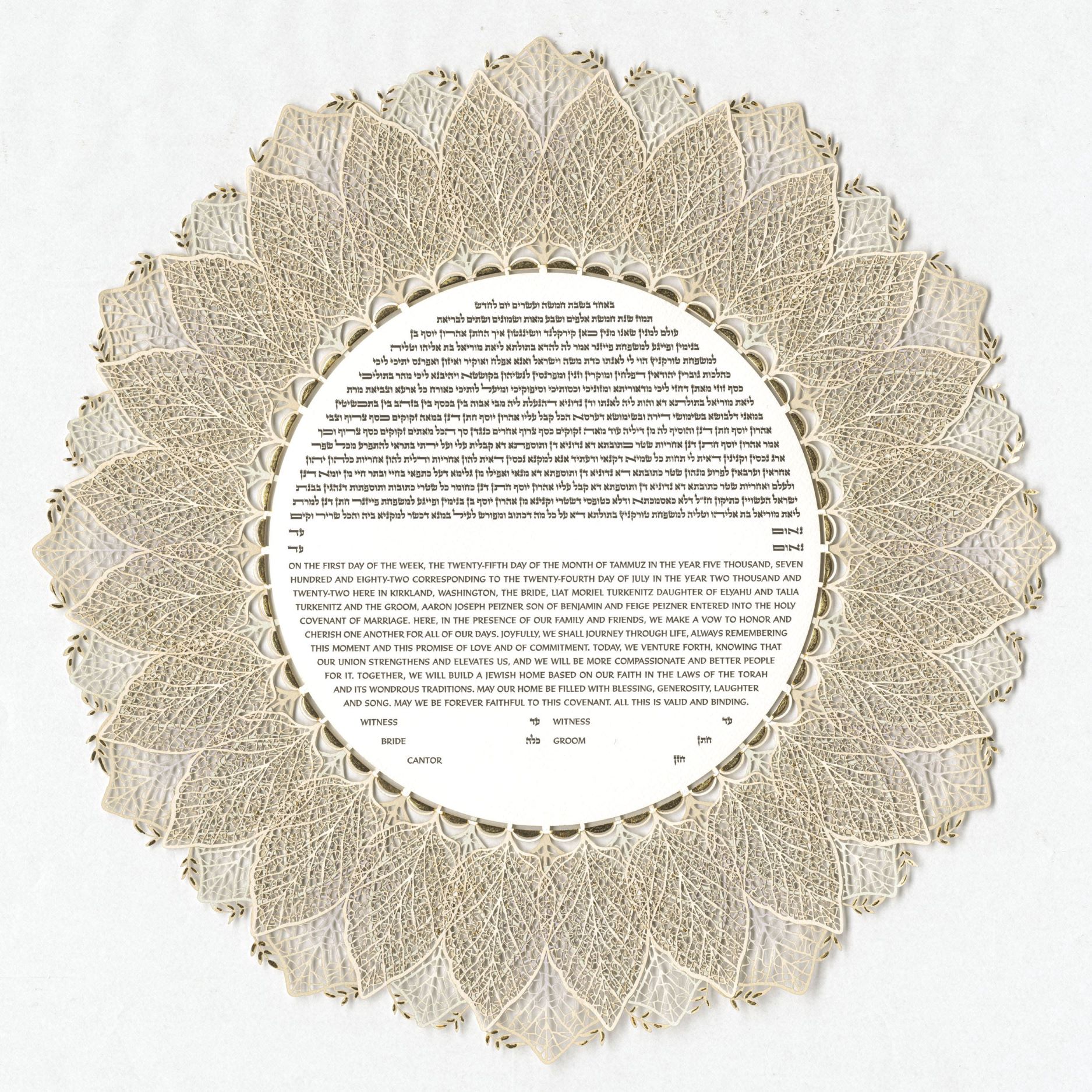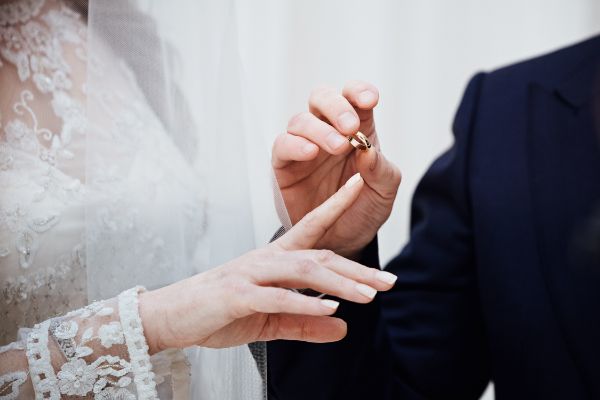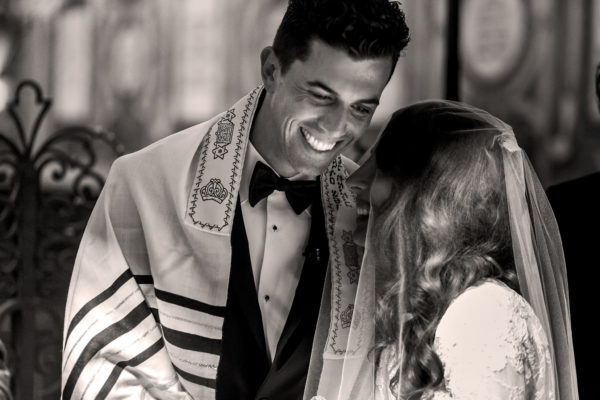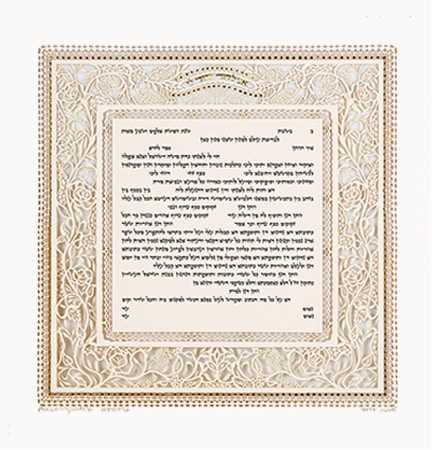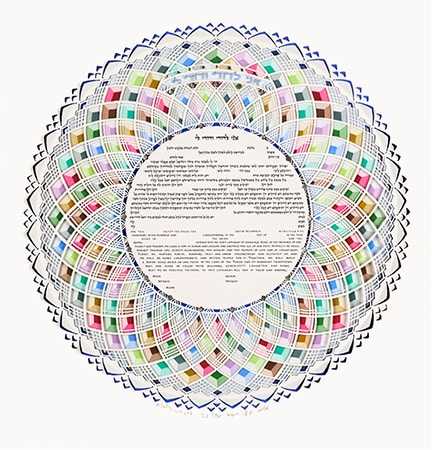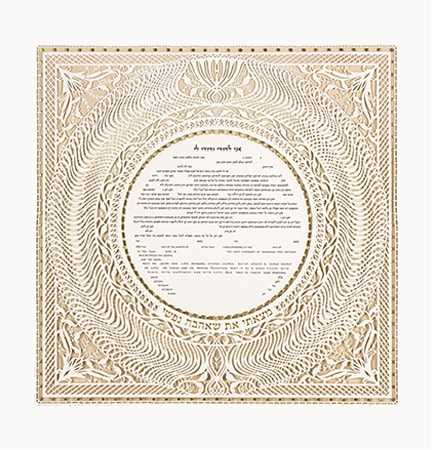What is an Orthodox Jewish Wedding?
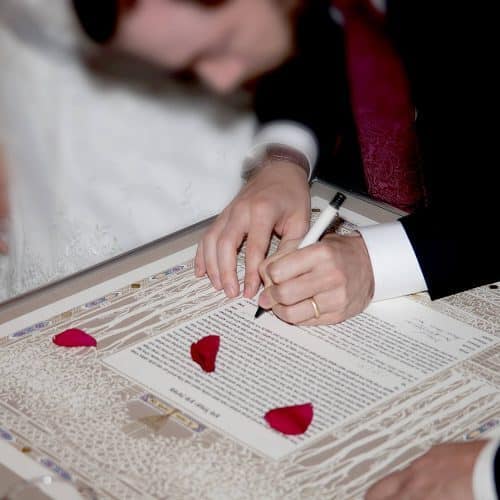
All Jewish wedding ceremonies are fundamentally based on the traditions and observances maintained in an Orthodox Jewish wedding. It’s worthwhile noting, here, that the advice that is often given when planning a Jewish wedding, in general, is to take a look at an Orthodox Jewish wedding as a template or as a point of departure. Here, we will give you a quick overview of what makes an Orthodox Jewish wedding, and the important role the ketubah.
What is an Orthodox Jewish Wedding?
A traditional Orthodox Jewish wedding ceremony is not just the actual ceremony, but also involves the intricacies of halacha. For example, just when, during the Jewish year, can or cannot an Orthodox Jewish wedding take place (not during periods of communal mourning, reflection and introspection). An Orthodox Jewish wedding ceremony is essentially made up of two parts:
Kiddushin (Betrothal/Sanctification) – The bride is betrothed when the groom places a ring on her finger and says, “Behold, you are sanctified to me with this ring in accordance with the law of Moses and Israel.” From that moment on, with the bride’s consent (of course!) she becomes his wife.
Nisuin (Marriage) – With the bride and groom standing side-by-side, the consummation of the betrothal is held beneath the chuppah, while the Sheva Brachot are recited.
The Ketubah
During an Orthodox Jewish wedding ceremony and in between Kiddushin and Nisuin, the ketubah is read in the original Aramaic text. Basically a wedding contract, the ketubah is drawn up prior to the ceremony and lists the obligations of the husband to his wife. Physical support such as providing food, clothing and shelter are included in the list of obligations. As well, there are clear stipulations written as to what the bride may expect in case of the untimely death of the groom or divorce. The ketubah, which protects the rights of a Jewish wife, is such an important aspect of the marriage, that the marriage itself cannot be formalized until the contract has been completed. The document is signed by two witnesses and at that point, the ketubah becomes the property of the wife and must remain in her possession for the life of the marriage.
Not only a legal document but a form of Jewish art, the Ketubah text is often written and embellished by beautiful artwork–later to be framed and displayed in a prominent space in the home. Based in Israel, Danny Azoulay is a talented ketubah artist who creates exquisite ketubah art, as well as, integrating the halachic requirements of an Orthodox Jewish wedding ketubah.

